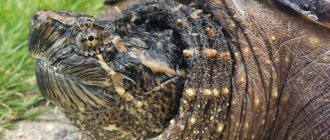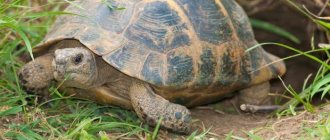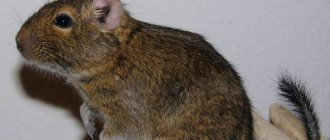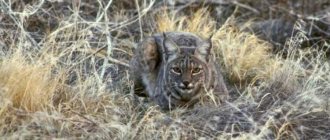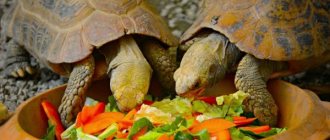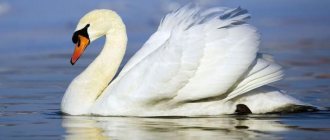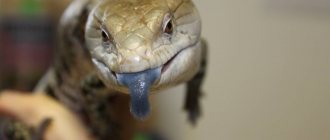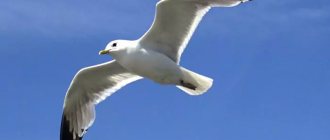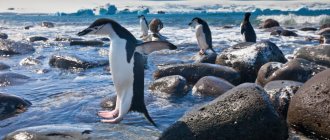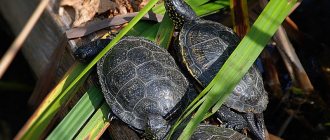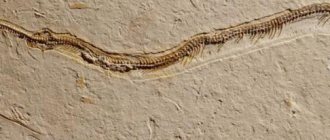Most people associate turtles exclusively with slowness. However, these cute creatures are very interesting and deserve to be learned more about them.
They are slow only on land - turtles can swim at tremendous speed. These reptiles appeared on Earth much earlier than us, and can consider themselves the rightful masters of the planet.
These animals are a symbol of wisdom, wealth and longevity. They say that the owner of a turtle will certainly live long and richly.
Unfortunately, most turtle species are endangered. Due to hunting by people and animals, as well as environmental pollution, turtles, alas, are becoming fewer and fewer.
We hope our selection will convince you that these unique creatures need our protection. Before you are the most beautiful turtles in the world, and whether the next generations will see them depends, among other things, on your care for the ecosystem.
spiny turtle
Due to the prickly spines extending from the shell, this species looks very unusual. You can meet these amazing creatures in the mountain streams and swamps of the Philippines, Singapore, Thailand, Malaysia and Indonesia. Young spiny turtles lead a predominantly land-based lifestyle, but the older generation prefers to relax in the water.
Spiny turtles are very small - up to 22 centimeters in length. They are adapted to life in an aquarium and can make excellent pets.
Egyptian
The Egyptian tortoise is quite small, for this reason it is often kept at home in an apartment. The habitat of these individuals is concentrated in the territory of Egypt, Israel, and Libya.
Important characteristics of Egyptian amphibians:
- The size of the tortoise's body is small, its length is only 12 centimeters;
- the color of the shell is yellow;
- on the surface of the shell there are brushes edged in the form of a dark stripe;
- There are no spurs on the back paws.
Before getting this species of small turtles, it is worth preparing places for their keeping. Land animals love space, for this reason it is worth installing a large aquarium with a volume of 150-200 liters. The temperature inside the aquaterrarium should be about 25-30 degrees.
Leatherback turtle
The largest turtle in the world, its weight can reach 900 kilograms. In addition, the leatherback turtle is the fastest reptile - it can reach speeds in water of up to 35 kilometers per hour. Adults live in the world's oceans and are tireless travelers covering vast distances. These turtles feed exclusively on jellyfish, and often die due to plastic bags that end up in the ocean - the poor reptiles perceive them as food.
The leatherback differs from other turtles not only in size and speed, but also in the absence of a shell.
Features of reproduction
The peak mating season is determined by the habitat of the animals.
Males actively fight for a place next to the female. Having won, the male begins to court the female - they sing serenades, establish tactile contact with the chosen one. Next, the female hides in a hole and lays eggs. Their number can reach more than 150 units.
The incubation period lasts up to three months. These animals are solitary; they only need a pair for reproduction. They winter in groups.
Yellow spotted humpback turtle
Yellow-spotted humpback turtles are incredibly beautiful creatures. They live in the Mississippi basin. These are very small turtles, no more than 18 cm in length.
Many owners of home terrariums adore these turtles - and for good reason. They are easy to care for, they are not aggressive and recognize their owners. These small predators feed on aquarium fish, raw chicken hearts, newborn mice, frogs, gammarus, grasshoppers and mice.
How to keep it in an apartment
The basis of the diet of those turtles that live in an apartment is juicy leaves of vegetables and flowers (dandelion), apples, cucumbers, beets and tomatoes.
To compensate for the lack of protein structures, you need to feed the animal with boiled bird eggs, and if necessary, include supplements and vitamins in the daily menu.
- Detailed description with photos of all animals included in the Red Book of Russia
- Zebra - habitats, appearance, diet and behavior, life cycle + 94 photos
Leopard - habitats, life cycle, rutting season and lifespan + 118 photos
When keeping aquatic species, the menu includes dried daphnia, bloodworms, earthworms, aquarium fish, small insects, and algae.
The turtle's lifestyle requires moderation in diet. Young individuals need to be fed in the morning and evening, and adults - once a day, no more often. Unloading should be done weekly.
Red-bellied short-necked turtle
This graceful turtle has a very unusual appearance. The small head, funny webbed feet and orange-red belly look very funny and cute.
Red-bellied short-necked turtles live in rivers, lakes and lagoons of New Guinea and Australia. They quickly get used to captivity, and therefore are excellent for home breeding. You can feed such pets with small fish, seafood and insects.
Red-headed flathead turtle
The main distinguishing feature of this beauty is its very long neck with spines. The red-headed flat turtle cannot completely hide its neck in its shell, and therefore lays it on the side.
These unique reptiles live in shallow waters of Brazil, Venezuela, Colombia and Peru.
If you are going to buy a red-headed flathead turtle, please note that these reptiles can only feel comfortable in captivity alone. Don't even think about purchasing several of these turtles, because the consequences can be disastrous - constant fights, injuries and death of the weaker animal.
What to feed
Since turtles are predominantly herbivorous reptiles, they need to be fed plant foods: vegetables, herbs, fruits, berries or special store-bought food.
If you feed your animal food that you have prepared yourself, then all the food must first be finely chopped and chopped. It is imperative to add vitamins and minerals to your food. In the case of ready-made feeds, this is not necessary, since their composition is balanced and enriched with the necessary macro- and micronutrients.
The best foods for turtles, typical for Russian regions, are apples, carrots and white cabbage. Plus they are cheap and available all year round. In the summer, turtles can be offered everything that grows during this period in gardens, orchards, and even in the city: plantain, clover, dandelion, raspberries, currants, apricots. Large seeds should be removed from fruits and berries before feeding to pets.
Bakery products, dairy, fermented milk, fish, meat products, insects, skins of citrus plants and food for other domestic animals (cats, dogs, parrots and others) are extremely harmful to herbivorous reptiles.
Ocellated trionix
Quite large turtles - up to 60 cm in length. Young ocellated trionics have spots on their shells that resemble eyes—it is from these that the turtles got their name.
You can meet these beautiful turtles in eastern India and Bangladesh. If you are the owner of a very spacious aquarium, you can buy such a reptile - of course, such a pleasure will cost you a lot, but it will be great to impress your guests. Ocellated trionics feed on fish and newborn mice.
Dimensions and weight
The turtle is a phenomenal reptile. Exceptional species grow up to 2 meters and weigh up to 1000 kilograms. But there are also small reptiles that weigh no more than 120 grams and grow up to 10 cm.
Magnificent forest turtle
The bright coloring of the magnificent forest turtle greatly attracts the attention of terrarium enthusiasts. This species needs good conditions - dividing the aquarium into land and water parts, a lamp that provides bright light in case the turtles want to bask. These are small turtles, up to 20 cm in length - and therefore they are quite suitable for home breeding.
In nature, they can be found in humid forests from Mexico to Costa Rica. Typically, young turtles prefer to spend time in the water, while more mature individuals move to land.
Balkan reptile
These are European land turtles that are very similar in appearance to representatives of the Mediterranean species. They inhabit Southern Europe, the largest number of them live near the sea.
These reptiles have the following features:
- reptiles have a small shell with a fairly strong structure. Its diameter size is 15-20 cm;
- the color of the shell is light in color, it also has inclusions of dark coloring;
- with age, the shell becomes darker;
- there is a spike at the end of the tail.
It is worth noting! Interestingly, the appearance and size of this reptile species differs depending on the region where it lives. Individuals that live in the west have smaller body sizes, unlike animals that live in the eastern part.
When choosing a land turtle for your home, you should first familiarize yourself with its species. The fact is that any breed has distinctive characteristics, and some are not suitable for home keeping. Each species has characteristic features, habits and maintenance requirements. This is a must know, especially for a novice breeder of these reptiles.
Kallagur
Quite large turtles - the length of the carapace can reach 50 cm. The head of males is white, there is a red stripe and blue spots on the muzzle. The head of females is dark gray, with a blurred orange border.
This is an exclusively river species; it rarely crawls onto land - usually only to lay eggs. But in the water it swims at incredible speed and can perform the most difficult tricks.
Notes
- Ananyeva N. B., Borkin L. Ya., Darevsky I. S., Orlov N. L.
Five-language dictionary of animal names. Amphibians and reptiles. Latin, Russian, English, German, French. / under the general editorship of academician. V. E. Sokolova. - M.: Rus. lang., 1988. - P. 153. - 10,500 copies. — ISBN 5-200-00232-X. - Darevsky I. S., Orlov N. L.
Rare and endangered animals. Amphibians and reptiles: Ref. manual / ed. V. E. Sokolova. - M.: Higher School, 1988. - P. 136. - 463 p., l. ill. — 100,000 copies. — ISBN 5-06-001429-0. - Kudryavtsev S. V., Frolov V. E., Korolev A. V.
Terrarium and its inhabitants / ed. Doctor of Biology sciences, prof. V. E. Flint. - M.: Forest Industry, 1991. - P. 265. - 349 p. — 130,000 copies. — ISBN 5-7120-018-2 (erroneous). - It may be included in the genus Geochelone
under the name
Geochelone carbonaria
. - Data for 1988.
Hamilton's turtle
They are medium-sized turtles found in rivers and forest ponds of Pakistan, India and Bangladesh. Females of this species, as a rule, are much larger than males. The Hamilton turtle was included in our selection due to its amazing color - black with a large number of creamy-white spots.
It is a predatory species that feeds on frogs, snails and fish. Occasionally it can eat algae.
Coating the bottom of the container
It is covered with soil or a bedding of hay. In the first case, the particles of material must be large so that the turtle does not eat too many pebbles. The second option is more summer, since it is not so easy to find hay in winter. It is allowed to fill the bottom with sand, but some reptiles eat it. If such behavior is typical for your pet, then it is better to refuse sand.
Another option is to add a layer of sand and lay a layer of large pebbles on top of it - the pet will sharpen its claws on them. Some species love to burrow, in which case it is worth putting more material in the tank for the turtle to enjoy. You should not use pieces of paper, expanded clay particles, sharp gravel, or litter intended for cat litter boxes, even wood, as soil.
Leopard tortoise
Also known as the “panther tortoise”. Quite a large species, reaching 50 cm in length. The main advantage of the leopard tortoise, of course, is its extraordinary beauty of color - chaotic spots of pale yellow, brown and black colors will not leave anyone indifferent.
Despite their spectacular and majestic appearance, leopard tortoises have very funny habits. They playfully move their paws at the sight of food, trying to reach maximum speed in order to quickly get lunch.
Are walks good for you?
You can take your pet outside; it is beneficial for the reptile. But only if the weather is warm, dry and the air temperature is not lower than 25°C. The turtle will happily wander around the green lawn or lawn and take a breath of fresh air.
It is important to choose a suitable area - calm, clean, where the reptile will be protected from overly curious or aggressive animals
You should always watch it - despite the apparent slowness, these armored animals often run away from their owners. If the place turns out to be noisy, the turtle will hide and will not even show its nose from its shell. These pets love to feast on fresh herbs; you can let them go for a walk where dandelions, clover, plantain, timothy, and chamomile grow.
Lumpy turtle
Unfortunately, this species is endangered. People hunted lump turtles for their meat until they caused a terrible population decline. Now the reptiles are protected, and the number of lump turtles is controlled through captive breeding.
Lumpy turtles have an unusually beautiful spotted color. Look at their photographs from our selection - is the opportunity to enjoy an exotic delicacy really worth destroying such beauty?
Common diseases of pet turtles
Most often, the causes of diseases of these reptiles are associated with improper care:
- Injuries. Pets often fall from heights and suffer fractures. In these cases, they are given a plaster cast or a splint, which the reptile wears for quite a long time, since it takes a lot of time for the bones to grow together.
- Necrosis of the shell. May develop due to mechanical damage. The pathology is considered serious and requires long-term treatment. A solution with a disinfecting effect is constantly applied to the affected area.
- Colds. This is a common disease that a reptile catches when it is overcooled or exposed to a draft. You can tell that your pet has a cold by heavy nasal discharge and difficulty breathing. In most cases, therapy is prescribed, including antibiotics and vitamin preparations.
- Intestinal disorders. Diarrhea often plagues turtles. It can be caused either by eating spoiled food or by infectious pathogens. It is advisable to take your pet to a veterinarian and have a stool test done. Based on the results, appropriate treatment is prescribed.
Turtles are strange, unusual creatures that have inhabited the earth for many millions of years. They have adapted well to life in captivity, but still need good conditions and quality care. In this case, their life cycle will last at least 30 years.
Assamese roofing tortoise
A very unusual little turtle. The interesting shape of the shell and pointed muzzle make the Assam roofing turtle funny and cute.
You can meet this unusual beauty in the fast streams of India and Bangladesh. Despite its modest size, this species is completely unsuitable for captivity. They hate people, and try in every possible way not to fall into their hands - that’s why the species has been little studied.
About turtle hygiene
Proper care of a pet is impossible without maintaining the cleanliness of the animal’s environment and personal hygiene.
You should always keep the premises clean and tidy. Owners often let their turtles go for walks, so you need to ensure that they do not ingest household garbage, as well as foreign objects lying on the floor.
The bottom of the terrarium must be cleaned of excrement daily; the feeder and drinking bowl are recommended to be washed as often as possible. The water in the drinking bowl should be changed every day, as fresh water is recommended for turtles.
All turtles love water treatments. Bathing is usually done once a week, but many experts advise washing armored pets as they become dirty. Warm water for hygienic bathing (with a temperature not lower than +30 degrees) is poured into a separate container at the level of 2/3 of the turtle’s height, so that the head is above the water surface.
How to bathe?
The shell, belly, paws and muzzle are carefully washed with a sponge or hand, trying not to touch the eyes. Areas of heavy contamination can be washed with baby soap
While swimming, you can see that the turtles really like it: they calmly allow water to be poured over them. Therefore, such a pleasant procedure for them can be carried out longer - up to 30 minutes.
After taking a hygienic bath, the pet should be wiped dry with a towel and released into the terrarium.
If you have small, curious baby turtles in your home, you can bathe them more often—three times a week.
Trimming claws
Although reptiles try to sharpen their claws on their own at home, care must be taken to ensure that they do not grow too long.
Therefore, nail trimming should be done regularly. This is not difficult to do either with sharp scissors or with a special nail clipper.
During this procedure, you need to be careful: you can cut only the white edges of the claws, the dark areas have blood vessels.
Carolina box turtle
These are very small turtles, the length of their carapace can reach a maximum of 23 cm. They impressed us with their bright color - bright yellow spots on a gray-green background look very impressive. The eyes of the males of this species are also distinguished by their unusual beauty - the iris has a bright red tint.
They live in the USA and Mexico, prefer to live in semi-deserts, forests and meadows - naturally, on the banks of water bodies. During heavy rains, they show unprecedented activity, and quite often crawl out onto the roadway - by the way, many species of turtles have this property, so be careful on the roads.
